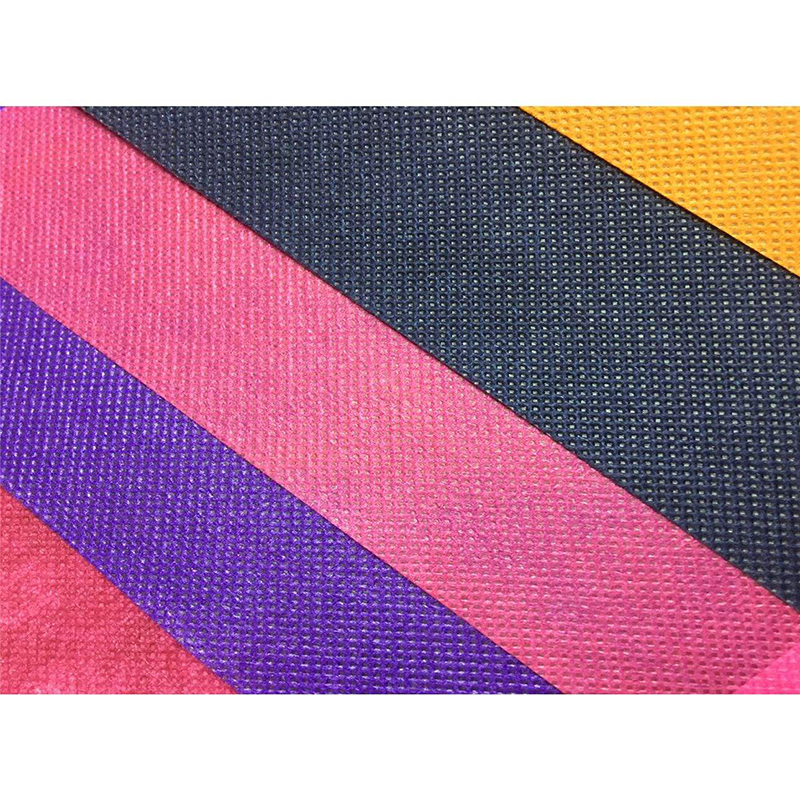In today’s world, sustainability is a growing priority for industries across the globe. As consumers and businesses alike are becoming more environmentally conscious, the demand for eco-friendly materials has surged. One such material that has gained popularity is RPET (Recycled Polyethylene Terephthalate) and PET (Polyethylene Terephthalate) spunbond fabric. Known for its strength, durability, and environmentally friendly properties, RPET/PET spunbond fabric is transforming the way products are designed, manufactured, and used. In this blog, we’ll explore what RPET/PET spunbond fabric is, its benefits, and its common uses in various industries.
What is RPET/PET Spunbond Fabric?
RPET/PET spunbond fabric is a type of nonwoven fabric made from polyethylene terephthalate (PET) fibers. RPET is made by recycling post-consumer plastic bottles and other PET materials, while PET is made from virgin polyester. The fibers are produced through the spunbond process, where the PET or RPET fibers are spun, bonded together by heat and pressure, and formed into a fabric.
This fabric is known for its strength, durability, and versatility, as well as its eco-friendly properties when made from recycled materials. RPET/PET spunbond fabric offers a sustainable alternative to traditional textiles, helping to reduce waste and promote the circular economy.
Key Benefits of RPET/PET Spunbond Fabric:
-
Sustainability: The most significant advantage of RPET spunbond fabric is its eco-friendliness. By recycling PET bottles and other PET products, RPET spunbond fabric helps reduce plastic waste, making it an important material for businesses seeking sustainable solutions. It also promotes a circular economy, where products can be reused and recycled, reducing the demand for virgin materials.
-
Durability: RPET/PET spunbond fabric is incredibly durable and resistant to wear and tear. It’s strong enough to withstand heavy use and harsh conditions, making it suitable for products that require long-lasting performance, such as packaging, medical textiles, and outdoor applications.
-
Lightweight: Despite its strength, RPET/PET spunbond fabric is lightweight, making it easy to handle, transport, and use in a variety of applications. This feature is especially important for products like bags, wraps, and protective coverings, where ease of use is essential.
-
Breathability: The fabric’s nonwoven structure allows for excellent breathability, making it suitable for use in medical textiles, hygiene products, and clothing. It helps prevent moisture buildup, keeping the user comfortable and safe.
-
Cost-Effective: RPET/PET spunbond fabric is relatively cost-effective, especially when made from recycled PET. The recycling process lowers production costs, making it an affordable material for manufacturers looking to produce sustainable products without compromising on quality.
-
Versatility: RPET/PET spunbond fabric can be used in a wide range of industries and applications. Its versatility makes it an excellent material for everything from packaging and medical products to automotive and construction uses.
Common Uses of RPET/PET Spunbond Fabric:
-
Packaging: RPET spunbond fabric is widely used in the packaging industry. Its strength, durability, and eco-friendliness make it an ideal choice for creating bags, sacks, and wraps. The fabric is often used for reusable shopping bags, product packaging, and protective wraps. By using RPET spunbond fabric, companies can create sustainable packaging solutions that reduce plastic waste.
-
Medical Textiles: Due to its durability, breathability, and resistance to moisture, RPET/PET spunbond fabric is used in medical textiles such as surgical drapes, gowns, and face masks. Its ability to provide a barrier against fluids while allowing air circulation makes it an excellent choice for healthcare applications.
-
Automotive Industry: The automotive industry utilizes RPET/PET spunbond fabric for interior parts, including seat covers, insulation materials, and trim fabrics. The fabric’s durability, lightweight nature, and ability to withstand heat make it a great fit for automotive applications.
-
Agriculture: RPET/PET spunbond fabric is used in agricultural applications such as weed control fabric, crop covers, and protective netting. The breathable nature of the fabric helps maintain soil moisture and temperature, promoting healthy plant growth while protecting crops from pests and harsh weather conditions.
-
Hygiene Products: RPET/PET spunbond fabric is a popular material for hygiene products like diapers, feminine hygiene products, and wipes. Its softness, moisture resistance, and breathability make it ideal for products that come in direct contact with the skin.
-
Construction: In the construction industry, RPET/PET spunbond fabric is used as geotextile fabric for drainage, reinforcement, and erosion control. It helps maintain soil integrity, prevent soil erosion, and improve the overall efficiency of construction projects.
Why Choose RPET/PET Spunbond Fabric?
RPET/PET spunbond fabric offers an unbeatable combination of sustainability, durability, and versatility. By using recycled PET materials, businesses can contribute to a cleaner environment while enjoying the high performance and low cost of this fabric. Whether you’re in the packaging, healthcare, automotive, or agriculture industry, RPET/PET spunbond fabric provides a reliable, eco-friendly solution that meets both your performance and sustainability goals.
As more companies shift toward sustainable practices, RPET/PET spunbond fabric stands out as a material that helps reduce plastic waste while offering the strength and functionality needed for a wide range of applications. Choosing RPET/PET spunbond fabric not only benefits the environment but also provides a high-quality, durable material that can help enhance your products and boost your brand’s commitment to sustainability.
In conclusion, RPET/PET spunbond fabric is a sustainable, durable, and versatile material that is reshaping industries worldwide. By incorporating this fabric into your products, you can reduce environmental impact, lower costs, and improve the overall performance of your products. Whether you’re looking for eco-friendly packaging, medical textiles, or agricultural solutions, RPET/PET spunbond fabric is an excellent choice for modern manufacturing.



